Modern desktop 3D printers are very useful machines that can print items for almost every type of purpose you can imagine, from useful gadgets to toys and much, much more. As such, we should find ways to put them to good use!
If you’re looking for inspiration, a good place to start is printing replacement items for various worn or broken items around the house. Whether you have a broken vacuum cleaner nozzle or a broken handle in your bathroom, 3D printing can often come to the rescue. 3D printed replacement parts can save both money and time, as most parts only take a couple of hours to print.
In this article, we’ve put together a list of a variety of replacement items for your household and garden that can be easily 3D printed. Let’s dive in!
Electrical Wall Plates
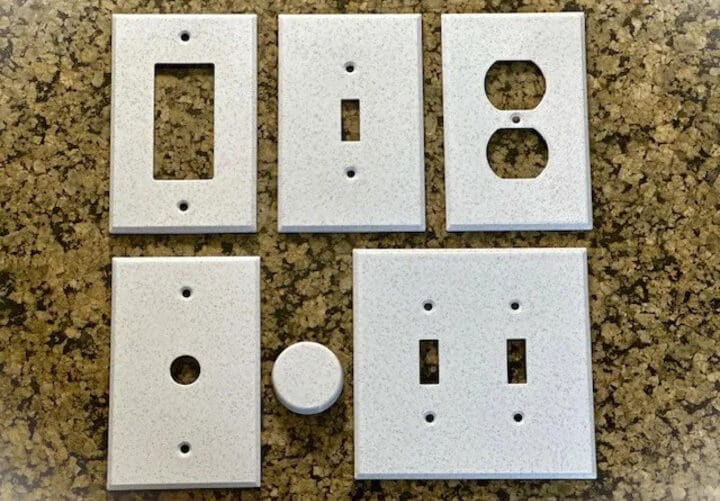
Electrical wall plates are a common part of every household, as they’re found in almost every room. They cover the rough cut hole in the wall and fit seamlessly around any electrical outlet. Due to being made of plastic, these covers can become scratched or cracked over time.
This set of 3D printable models can replace those plates. The set includes plates for electrical outlets, light switches, and coaxial outlets, and there are several variations of each model. There’s also a replacement light dimmer knob. The plates and the knob can all be printed without supports and although the designer has not mentioned what materials work best, most people in the comments used either PLA or PETG.
- Who designed it? BigB3D
- How printable/popular is it? There are 18 successful makes and this set of models has been liked over 1,000 times!
- Where to find it? Printables
Vacuum Cleaner Nozzles
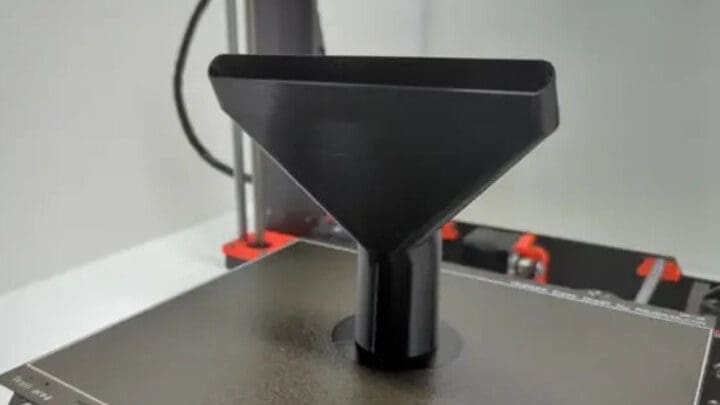
As many people know, vacuum cleaner nozzles can break or disappear rather easily. Sometimes, the smallest attachment just isn’t small enough to fit in a particular nook or cranny. This is where this set of vacuum cleaner nozzles comes in handy. These come in a variety of different shapes and fit hoses with diameters ranging from 1 to 4.5 inches.
For printing, the designer recommends increasing the perimeter count so that the shells of the vacuum nozzle are solid and only using infill in the hose stops of the print. Although the designer doesn’t include a recommended material in the model details, most makers report using PETG, most likely due to that material’s excellent balance of durability and printability.
- Who designed it? Ostat
- How printable/popular is it? There are 87 posted makes of several of the different variations. These nozzles have been remixed 3 times and have been added to over 12,500 collections so far.
- Where to find it? Printables
Furniture Leg

We all know how annoying working at a table with wobbly legs is. This adjustable furniture leg easily fixes the problem. All you need to do is mount them underneath the table legs, adjust the height of the prints to compensate for the uneven table legs, and your problem is solved.
Each adjustable leg consists of two pieces that rotate to adjust the vertical height, and the leg is designed to be mounted by four small screws onto each furniture leg. There are two variations of the model to choose from: a 25-mm leg that extends to 35 mm and a 55-mm leg that extends to 80 mm.
The designer doesn’t suggest a specific material, but if you should print these at home, we would recommend using a more durable material like PETG. It has a higher tensile strength and is more heat resistant than PLA.
- Who designed it? Kuban66
- How printable/popular is it? This adjustable furniture leg has around 730 downloads, over 100 likes, and 10 posted makes.
- Where to find it? Printables
Closet Rod Holder

Closet rod brackets often carry more load than people realize and they can break after prolonged stress. When this happens, we as makers have nothing to fear! This model is a simple closet rod holder that can replace most broken ones in any closet.
The main model consists of two pieces: a main bracket and a rod-locking top. However, there’s also a variation without the locking top. The holder is designed to be screwed into the wall with two standard-size screws.
The designer has provided scale percentages for three common rod sizes: 1 inch, 1.25 inches, and 1.375 inches. When printed with the larger side on the print bed, there’s no need for supports.
- Who designed it? knickers
- How printable/popular is it? To date, this model has over 1,000 downloads, some very positive comments, and 1 shared make.
- Where to find it? Thingiverse
Handle
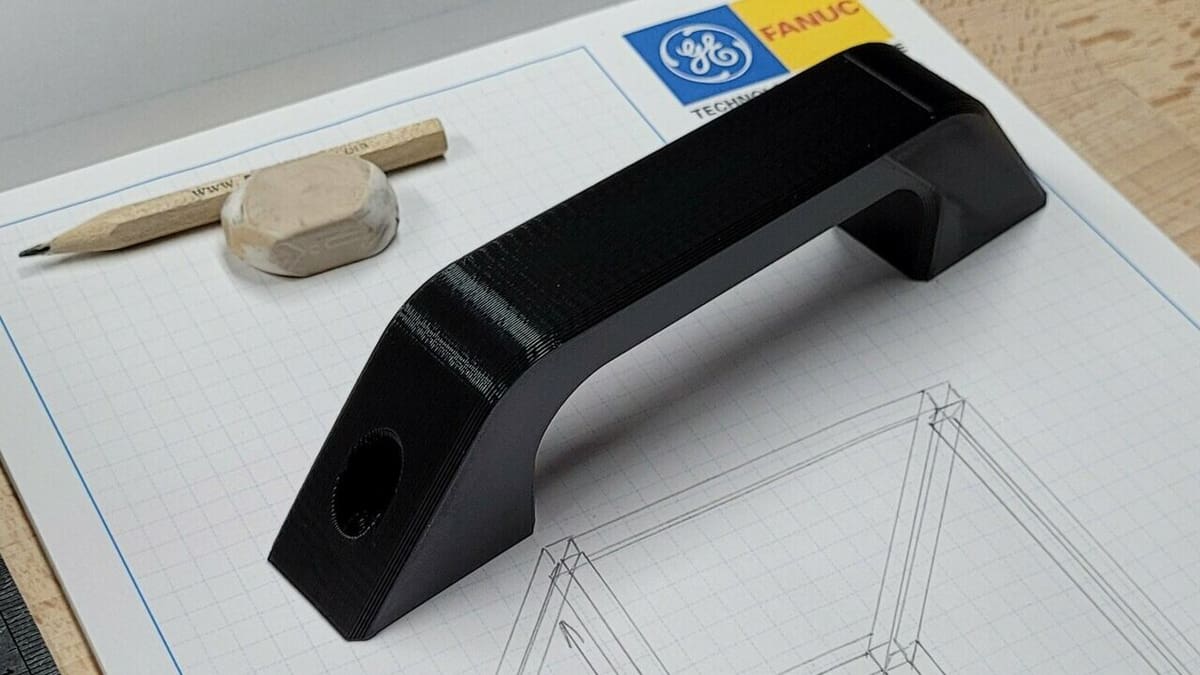
This all-purpose handle can easily replace broken handles on commonly used items around the house, such as cabinet doors, kitchen drawers, or garden gates. It can also be mounted on pretty much any portable or movable item with a flat surface. One maker has even used this handle to replace the one on his radiation detector!
These handles feature screw holes for ease of mounting onto soft wood like plywood or pressboard. If mounting onto metal or glass surfaces, you can use a strong adhesive like glue or double-sided tape. There’s also a version of the handle designed to slide onto any 3D printer with aluminum extrusions, like the Creality Ender 3.
The designer suggests using a stronger filament like carbon fiber, ABS, or PETG to print these handles for more durability. They also suggest using an infill density of 50% or more for improved strength.
- Who designed it? guppyk
- How printable/popular is it? This model has a number of positive comments, over 11,000 likes, and 31 makes on Thingiverse, so it seems like most 3D printers can handle this handle pretty well.
- Where to find it? Thingiverse
Water Faucet Filter
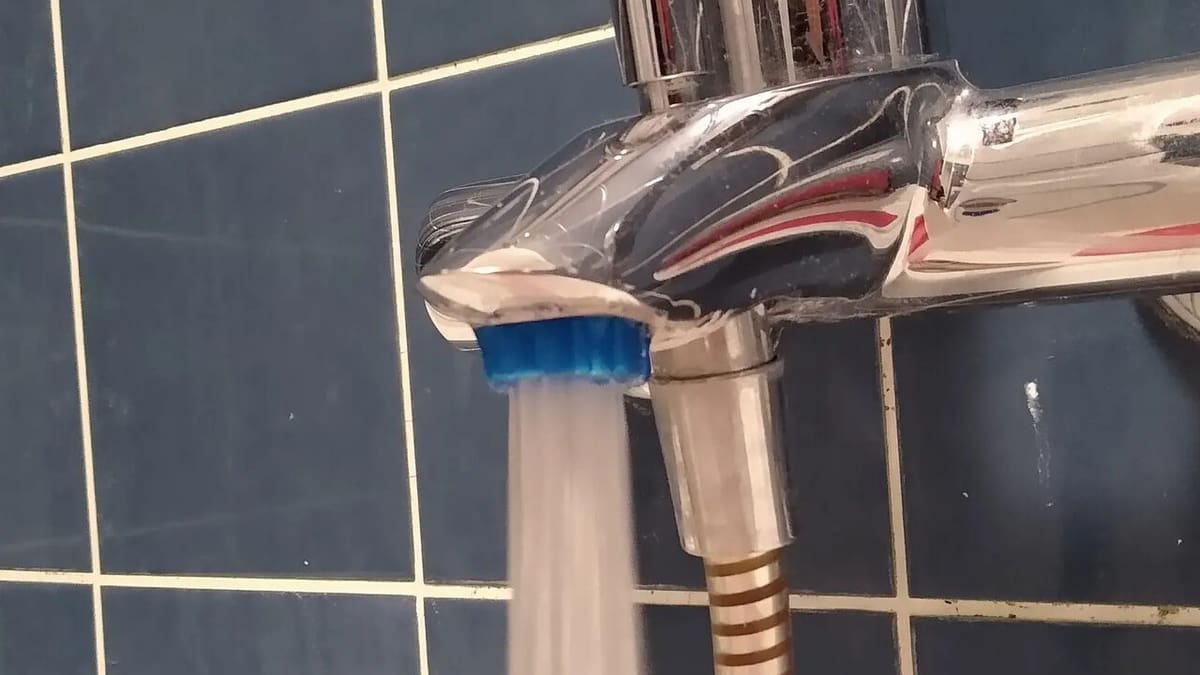
This model is designed to replace the old calcified metal filter on your sink or bathtub’s water faucet or tap. The designer states that they had problems cleaning his old metal filters, so they decided to make a 3D printable version that was easy to clean and decalcify. The filters can be installed by simply unscrewing the old one, keeping the rubber gasket in the nozzle, and screwing the new 3D printed one on.
The filters come in several variations with different hole types and sizes to accommodate different faucets and water flow rates. The designer suggests using a resin printer for printing these filters, as FDM printers may not be able to achieve the necessary small dimensions and smooth surfaces required for the right flow. However, some makers have successfully printed these filters using an FDM printer, despite the challenges.
- Who designed it? Area51
- How printable/popular is it? These faucets have been downloaded over 1,100 times and liked almost 300 times. There are currently 16 recorded makes, some of which were printed using FDM printers.
- Where to find it? Printables
Shower Head Holder
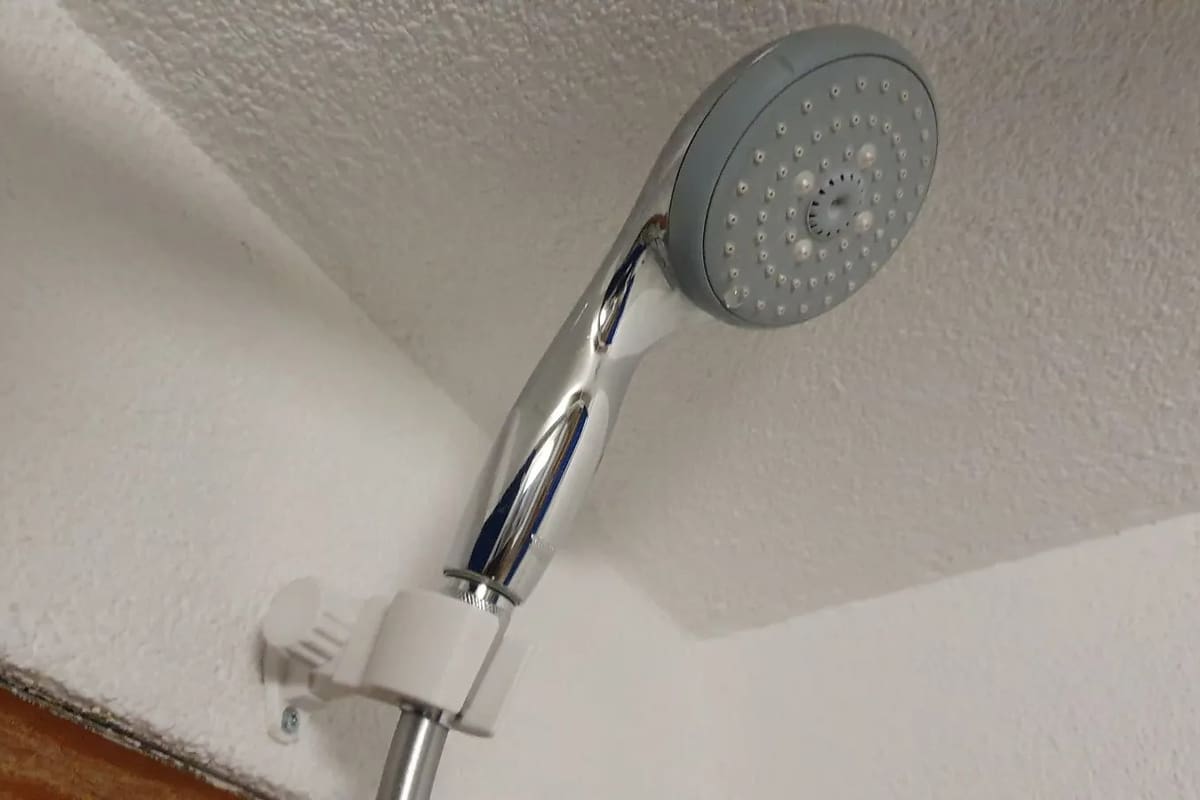
Another commonly broken household item is the shower head holder. We all know how annoying it is to have the shower head twist around freely on the end of the hose like the head of a snake and spray water everywhere. This printable holder aims to solve that problem and can be mounted on any flat surface using either screws or some strong adhesive.
The holder will grasp any showerhead with an end diameter between 20 and 24 mm. The holder is made to be printed with PETG for strength and durability in everyday use and consists of five printable parts. The entire holder can be assembled with no additional hardware and the parts are both press-fitted and screwed together. Because of this, you’ll want to make sure that your 3D printer is well calibrated before you send the sliced model over.
- Who designed it? Fargo
- How printable/popular is it? This model currently has over 230 downloads, more than 40 likes, and 3 successful makes.
- Where to find it? Printables
Cable Repair & Protect
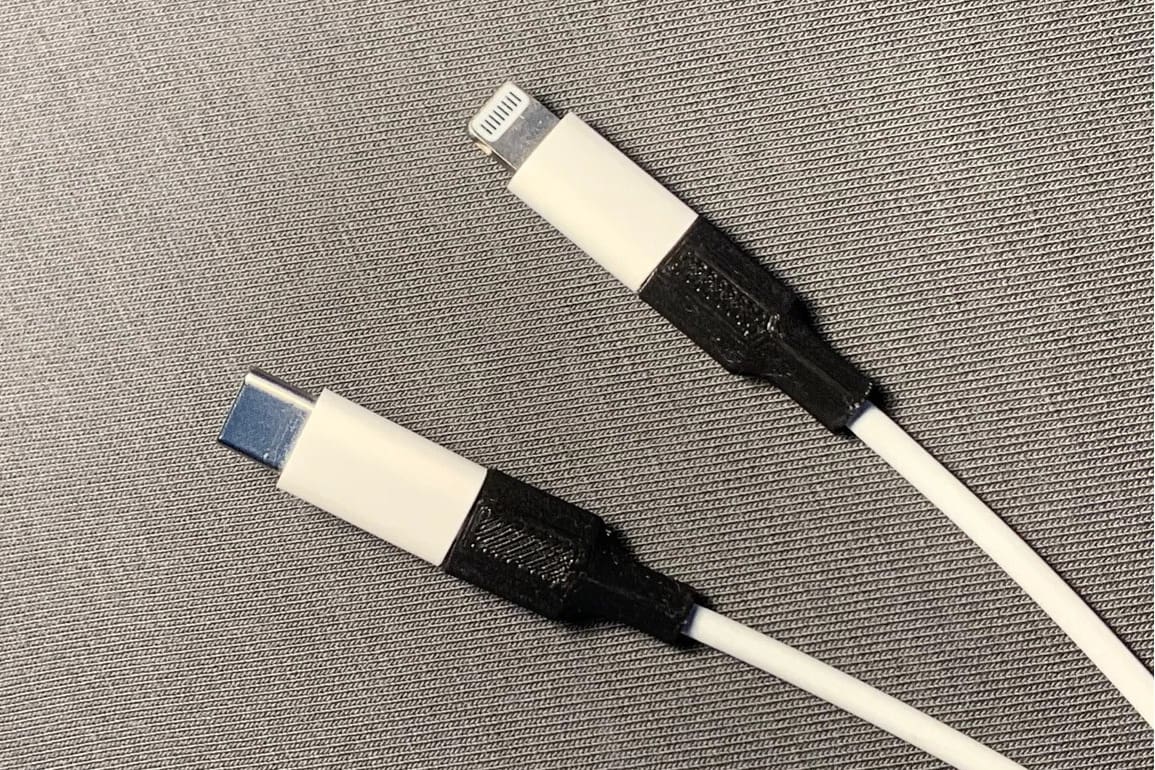
The designer of this model discovered that most charging cables seem to always break at the same place on every cord, so they decided to find a way to solve that problem with 3D printing. This design features two pieces that slide together with the cable held in between them. This clever model both fixes the cable and protects it from breaking again.
There are several versions and revisions of the main models, but all of them are designed to fit either Samsung USB-C cords or Apple lightning cords. The models can be printed with PLA and should be printed with slightly finer layer heights, like 0.12 mm, for a better fit.
- Who designed it? jannn
- How printable/popular is it? This model has multiple positive comments, over 2,500 likes, and 75 makes so far.
- Where to find it? Printables
Gutter Sieve
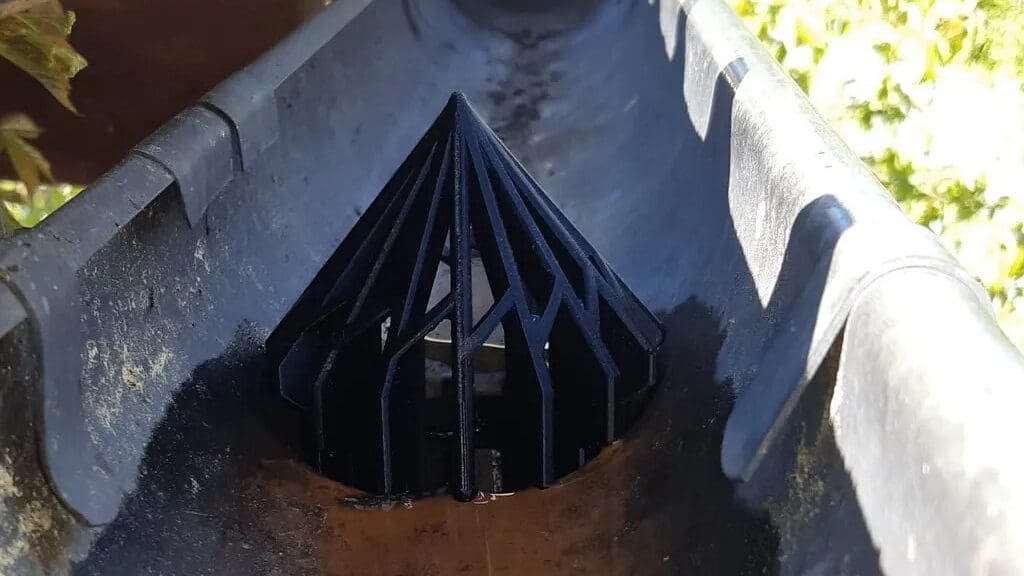
Clogged gutters are one of the most annoying household problems to fix, especially if you’re someone whose house sits right under trees. This problem can get 10 times worse if the gutter downspout or drain gets clogged. This gutter sieve fits right over downspouts and prevents nefarious matter such as leaves and small sticks from clogging up the spout. It will work in most gutters either as a replacement or as an entirely new implement.
The designer states that the sieve will likely fit in any downspout or downpipe with an inner diameter of approximately 120 to 140 mm, although they haven’t tested the sieve for pipes more than about 120 mm in diameter.
The designer says that any filament will work to print the sieve, but we suggest using a more heat-resistant material like PETG or ASA, as metal roofs tend to get quite hot in the summer months.
- Who designed it? Findusdwarf
- How printable/popular is it? This model currently has a total of over 150 downloads, 77 likes, and 2 makes.
- Where to find it? Printables
Garden Hose Adapter
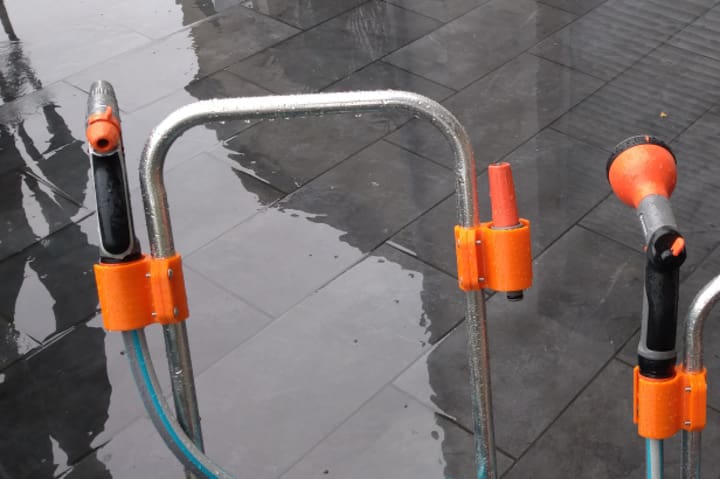
Oftentimes, garden hose spool holders lack a place to mount the spray nozzle. If placed on top of the spool, the nozzle can fall and break, especially when using rolling spool holders. This specific model is designed to be attached to a 22.5-mm diameter pipe and securely holds the hose nozzle to prevent it from hanging loosely.
Two components make up this model, and they should be printed in a stronger material such as PETG or ABS. The components are fastened together with M4 bolts to clamp on the pipe.
- Who designed it? BoopidooDesigns
- How printable/popular is it? This model currently has over 2,000 downloads, a few positive comments, and 6 makes.
- Where to find it? Thingiverse
License: The text of "How to Fix Your House with 3D Printed Replacement Parts" by All3DP is licensed under a Creative Commons Attribution 4.0 International License.




